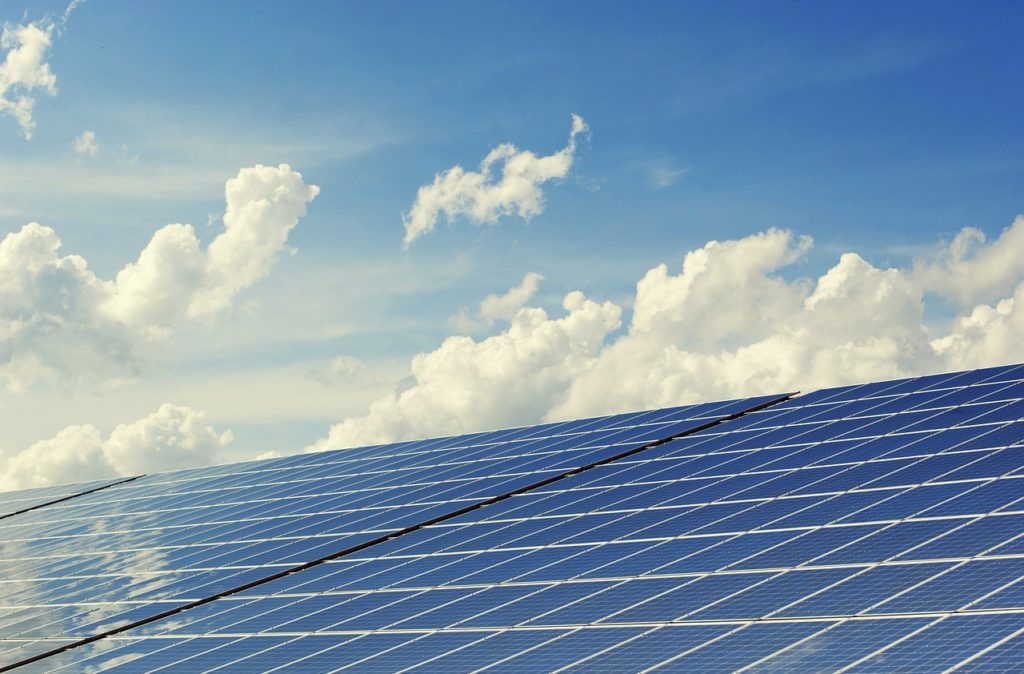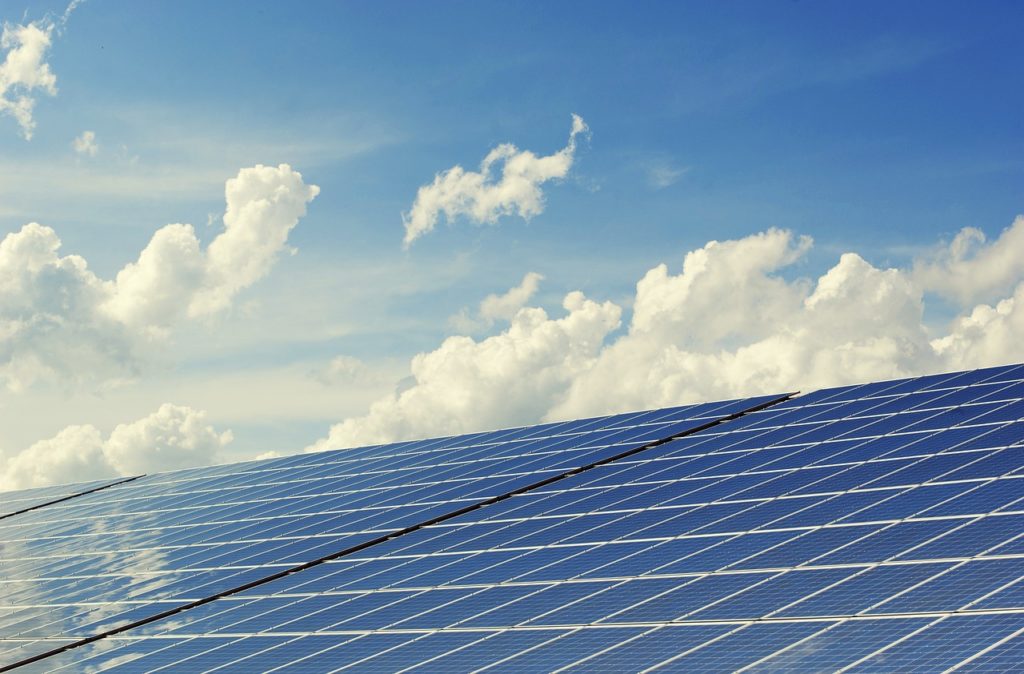In this article, you will explore the exciting developments in energy-efficient wastewater treatment technologies. As we all become more mindful of our environmental impact, finding sustainable ways to treat wastewater is essential. With the advancements in technology, innovative solutions are emerging that not only effectively treat wastewater but also minimize energy consumption. Join us as we uncover these remarkable breakthroughs in making our wastewater treatment processes more efficient and eco-friendly.
Advancements in Energy-efficient Wastewater Treatment Technologies
Wastewater treatment plays a crucial role in protecting the environment and ensuring public health. However, traditional wastewater treatment processes are often energy-intensive and can have a significant carbon footprint. In recent years, there has been a growing focus on developing energy-efficient technologies for wastewater treatment. These advancements not only help conserve energy but also contribute to sustainable resource management. In this article, we will explore ten energy-efficient wastewater treatment technologies and their various advantages.

1. Membrane Bioreactor (MBR) Systems
1.1 Enhanced Treatment Efficiency
Membrane Bioreactor (MBR) systems combine biological treatment with membrane filtration, resulting in a highly efficient wastewater treatment process. The membranes used in MBR systems have a fine pore size, which enables the removal of suspended solids, pathogens, and even nutrients like nitrogen and phosphorus. This enhanced treatment efficiency leads to a higher quality of treated effluent.
1.2 Reduction in Energy Consumption
MBR systems have demonstrated significant reductions in energy consumption compared to conventional activated sludge processes. The use of membrane filtration eliminates the need for secondary clarifiers, which consume a considerable amount of energy. Additionally, the ability to operate at higher mixed liquor suspended solids (MLSS) concentrations reduces the aeration requirements, resulting in lower energy usage.
1.3 Improved Nutrient Removal
One notable advantage of MBR systems is their ability to achieve superior nutrient removal. The enhanced treatment efficiency and the presence of a high concentration of biomass in the reactor facilitate the removal of nitrogen and phosphorus from wastewater. This is particularly important in areas with strict limits on nutrient discharge to protect sensitive ecosystems.
1.4 High-quality Effluent
MBR systems produce a high-quality effluent that meets stringent regulatory standards for discharge or reuse. The ultrafiltration or microfiltration membranes used in these systems effectively remove suspended solids, bacteria, viruses, and other pathogens, ensuring the safety of the treated wastewater. The resulting high-quality effluent can be reused for various non-potable applications, such as irrigation or industrial processes.
1.5 Integration with Renewable Energy Sources
MBR systems can be easily integrated with renewable energy sources, further enhancing their energy efficiency. For example, the aeration process in MBR systems can be powered by solar energy, reducing reliance on conventional electricity sources. This integration with renewable energy enables more sustainable and environmentally friendly wastewater treatment processes.
2. Anaerobic Digestion
2.1 Biogas Production
Anaerobic digestion is a biological process that breaks down organic matter in the absence of oxygen, producing biogas as a valuable byproduct. Biogas is primarily composed of methane, which can be utilized as a renewable energy source. The biogas produced from anaerobic digestion can be used for electricity generation, heat production, or as a transportation fuel, reducing the dependence on fossil fuels.
2.2 Energy Recovery
In addition to biogas production, anaerobic digestion enables the recovery of energy in the form of heat. The heat generated during the digestion process can be utilized for various purposes, such as space heating or water heating. This energy recovery further contributes to the overall energy efficiency of wastewater treatment plants.
2.3 Reduction of Sludge Volume
Anaerobic digestion also offers the advantage of reducing the volume of sludge generated during the wastewater treatment process. Through the digestion process, the organic matter in the sludge is converted into biogas, leaving behind a smaller volume of residual solids. This reduction in sludge volume minimizes the costs associated with sludge disposal and management.
2.4 Enhanced Nutrient Removal
Anaerobic digestion can effectively remove nutrients such as nitrogen and phosphorus from wastewater. The process promotes the biological uptake of these nutrients by microorganisms, thereby reducing their concentration in the final effluent. This nutrient removal capability is essential in preventing eutrophication and maintaining the ecological balance in receiving water bodies.
2.5 Pathogen Inactivation
The anaerobic digestion process also contributes to the inactivation of pathogens present in wastewater. The conditions inside the digester, including high temperature and the absence of oxygen, create an inhospitable environment for pathogens, effectively reducing their concentration. This pathogen inactivation enhances the safety of the treated wastewater and reduces the risk of disease transmission.

3. Nutrient Removal and Recovery
3.1 Biological Nutrient Removal
Biological Nutrient Removal (BNR) processes utilize specialized microbial communities to remove nutrients from wastewater. These processes typically involve two main steps: nitrification and denitrification. Nitrification converts ammonia to nitrate, while denitrification converts nitrate to nitrogen gas, which is released into the atmosphere. BNR processes enable efficient removal of nitrogen from wastewater, reducing its environmental impact.
3.2 Enhanced Resource Recovery
In addition to nutrient removal, BNR processes also facilitate resource recovery. The concentrated biomass and residual nutrients from the treatment process can be utilized for various applications. For example, the biomass can be used as a soil amendment or converted into biogas through anaerobic digestion. The recovered nutrients can be recycled as fertilizers, closing the loop on resource utilization.
3.3 Anaerobic Ammonium Oxidation (Anammox)
Anaerobic Ammonium Oxidation (Anammox) is a biological process that enables the direct conversion of ammonium and nitrite into nitrogen gas, without the need for external organic carbon sources. This process offers significant energy savings compared to traditional nitrification-denitrification processes. Anammox can be integrated into wastewater treatment plants, providing a more sustainable approach to nitrogen removal.
3.4 Struvite Precipitation
Struvite precipitation is a chemical process that facilitates the recovery of phosphorus from wastewater in the form of struvite crystals. These crystals can be used as a slow-release fertilizer, providing a valuable resource from wastewater. Struvite precipitation also helps in reducing the phosphorus concentration in the effluent, minimizing its impact on the receiving water bodies.
3.5 Phosphorus Recovery
Aside from struvite precipitation, several other technologies have been developed for phosphorus recovery from wastewater. These include the use of adsorbents or ion exchange resins to selectively capture phosphorus from the wastewater stream. Phosphorus recovery not only reduces the environmental impact of wastewater discharge but also helps alleviate the dependence on phosphate rock, a finite resource used in the production of fertilizers.
4. Advanced Oxidation Processes (AOPs)
4.1 Increased Degradation Efficiency
Advanced Oxidation Processes (AOPs) involve the generation of highly reactive oxygen species, such as hydroxyl radicals, to oxidize and degrade organic and inorganic pollutants in wastewater. These processes are highly effective in breaking down complex and persistent contaminants that are challenging to remove using conventional treatment methods.
4.2 Removal of Emerging Contaminants
AOPs have demonstrated exceptional capability in removing emerging contaminants, including pharmaceuticals, personal care products, and pesticide residues, which are not effectively removed by conventional treatment processes. The advanced oxidation reactions break down these contaminants into simpler, less harmful compounds, reducing their overall environmental impact.
4.3 Reduction in Chemical Requirement
A unique advantage of AOPs is the potential for reducing the requirement of chemical additives in the treatment process. The highly reactive oxygen species generated during AOPs can directly oxidize pollutants without the need for additional chemicals. This not only reduces costs but also minimizes the production of chemical sludge, simplifying the treatment process.
4.4 Minimization of Sludge Production
AOPs minimize sludge production compared to conventional treatment processes. The oxidation reactions result in the degradation of organic compounds into simpler and less complex compounds, reducing the volume of residual sludge. This reduction in sludge production can significantly reduce the costs associated with sludge management and disposal.
4.5 Improved Disinfection
AOPs also offer improved disinfection capabilities compared to conventional disinfection methods, such as chlorination. The reactive oxygen species generated during AOPs effectively inactivate pathogens and destroy their DNA, ensuring the safety of the treated wastewater. This enhanced disinfection capability is crucial in preventing the potential transmission of waterborne diseases.

5. Forward Osmosis
5.1 Lower Energy Consumption
Forward Osmosis (FO) is a membrane-based separation process that utilizes an osmotic driving force to separate water and contaminants. Compared to traditional reverse osmosis processes, FO requires lower hydraulic pressure, leading to lower energy consumption. This makes FO an energy-efficient alternative for various water treatment applications, including wastewater treatment.
5.2 Efficient Removal of Contaminants
FO processes effectively remove contaminants, including salts, heavy metals, organic compounds, and microorganisms, from wastewater. The selectively permeable membrane used in FO allows the passage of water molecules while rejecting most contaminants. This results in a purified water stream and a concentrated draw solution containing the removed contaminants.
5.3 Concentration of Waste Streams
FO processes can also be utilized for the concentration of waste streams, such as high-strength industrial effluents or brines generated from desalination processes. By utilizing the osmotic driving force, the water is extracted from the waste stream, leaving a highly concentrated solution or brine. This concentrated stream can then be treated or disposed of more effectively.
5.4 Potential for Resource Recovery
The concentrated draw solution or brine generated during FO processes may contain valuable resources that can be recovered. For example, the concentrated salts can be retrieved and utilized in various industries, reducing the need for additional raw materials. The potential for resource recovery further enhances the sustainability of FO-based wastewater treatment processes.
5.5 Robust Performance
FO membranes have demonstrated excellent fouling resistance and long-term stability, ensuring robust performance in wastewater treatment applications. The unique membrane structure and the osmotic driving force contribute to the minimization of fouling and membrane degradation, resulting in reliable and sustainable operation.
6. Microbial Fuel Cells (MFCs)
6.1 Direct Energy Generation
Microbial Fuel Cells (MFCs) utilize the metabolic activity of microorganisms to directly convert organic matter in wastewater into electrical energy. The microorganisms oxidize the organic matter, releasing electrons that can be captured and harnessed to generate electricity. This direct energy generation process offers an innovative approach to sustainable wastewater treatment.
6.2 Simultaneous Treatment and Power Production
One of the notable advantages of MFCs is their ability to simultaneously treat wastewater and produce power. As the microorganisms degrade the organic matter, the wastewater is effectively treated, reducing its organic content and removing contaminants. The power generated during this process can be utilized for onsite energy needs or even fed back into the grid.
6.3 Conversion of Organic Matter into Electrical Energy
The conversion of organic matter into electrical energy in MFCs provides an alternative to traditional treatment processes that require external energy inputs. This inherent energy recovery capability not only reduces the overall energy consumption of wastewater treatment but also contributes to a more sustainable and self-sufficient treatment approach.
6.4 Scalability and Modularity
MFCs offer scalability and modularity, making them suitable for a wide range of applications. They can be easily scaled up or down based on the treatment capacity requirements, making them adaptable for both centralized and decentralized wastewater treatment systems. The modular nature of MFCs also allows for easy installation and operation in various settings.
6.5 Integration with External Power Systems
MFCs can be integrated with external power systems, such as renewable energy sources or conventional grid power, to ensure continuous operation. During periods of low organic load in the wastewater, external power sources can be utilized to maintain the electricity generation capacity. This integration provides flexibility and reliability to the overall treatment system.
7. Constructed Wetlands
7.1 Natural Treatment Processes
Constructed wetlands utilize the natural processes occurring in wetland ecosystems to treat wastewater. The wetland vegetation and the microbial communities present in the wetland environment help remove contaminants and nutrients through processes such as filtration, adsorption, and microbial degradation. This natural treatment approach mimics the purification functions of natural wetlands and provides a sustainable alternative to conventional treatment methods.
7.2 Low Operating Costs
Constructed wetlands offer low operational costs compared to traditional wastewater treatment plants. Once established, these systems require minimal energy inputs and have lower maintenance requirements. The reliance on natural processes and the use of vegetation for treatment contribute to the affordability and sustainability of constructed wetland systems.
7.3 Energy-efficient Nutrient Removal
One of the key advantages of constructed wetlands is their ability to efficiently remove nutrients from wastewater. The wetland plants and the microbial communities in the wetland environment actively uptake and assimilate nutrients such as nitrogen and phosphorus. This natural nutrient removal capability helps in reducing the environmental impact of wastewater discharge.
7.4 Habitat Creation and Biodiversity Promotion
Constructed wetlands provide habitat and promote biodiversity in the treatment area. The wetland vegetation provides shelter, food, and nesting sites for various species, contributing to the overall ecological health of the surrounding environment. This habitat creation and biodiversity promotion further enhance the ecological value of constructed wetland systems.
7.5 Stormwater Management
Constructed wetlands can also be utilized for stormwater management, providing multiple benefits. The wetland vegetation and the underlying soil act as natural filters, absorbing and slowing down stormwater runoff. This helps in reducing the peak flow rates, controlling erosion, and enhancing water quality. By integrating stormwater management with wastewater treatment, constructed wetlands offer a holistic approach to water resource management.
8. Photocatalysis
8.1 Effective Degradation of Contaminants
Photocatalysis involves the use of light-activated catalysts to degrade organic and inorganic pollutants in wastewater. The photocatalysts, typically based on titanium dioxide or other semiconductors, absorb light energy and generate highly reactive species that can break down the contaminants. This results in an effective and eco-friendly degradation process for a wide range of pollutants.
8.2 Use of Solar Energy
One of the significant advantages of photocatalysis is its utilization of solar energy as the driving force for the treatment process. The photocatalytic reactions can be powered by natural sunlight, reducing the dependence on external energy sources. This use of solar energy contributes to the overall energy efficiency and sustainability of the wastewater treatment system.
8.3 Reduction in Chemical Requirements
Photocatalysis offers the potential to reduce the reliance on chemical additives for wastewater treatment. The reactive species generated during the photocatalytic process directly oxidize contaminants, eliminating the need for additional chemicals. This reduces the operational costs and minimizes the production of chemical sludge, simplifying the treatment process.
8.4 Mineralization of Organic Matter
A key advantage of photocatalysis is the complete mineralization of organic matter present in wastewater. The highly reactive species generated by the photocatalyst break down complex organic compounds into simpler and less harmful byproducts, such as carbon dioxide and water. This mineralization process ensures the complete removal of organic contaminants, leading to a high-quality treated effluent.
8.5 Potential for Water and Energy Recovery
Photocatalysis also offers the potential for water and energy recovery from wastewater. The treated effluent from photocatalytic processes can have high water quality, making it suitable for various non-potable uses or even direct potable reuse. Additionally, the residual energy from the photocatalytic reactions can be harnessed and utilized for onsite energy needs, enhancing the overall sustainability of the treatment system.
10. Solar-powered Systems
10.1 Harnessing Solar Energy for Treatment Processes
Solar-powered systems utilize solar energy as the primary energy source for various wastewater treatment processes. This can include solar-powered aeration systems, solar water heating systems, or solar-powered pumps for process water movement. By harnessing the abundant and renewable energy from the sun, these systems reduce the reliance on non-renewable energy sources, leading to more sustainable wastewater treatment.
10.2 Off-grid Operation
Solar-powered wastewater treatment systems offer off-grid operation capabilities. This is particularly advantageous in remote or rural areas where access to conventional electricity sources may be limited. By utilizing solar energy for treatment processes, these systems can operate independently, providing vital wastewater treatment services in areas with limited infrastructure.
10.3 Reduced Reliance on External Power Sources
By relying on solar energy, solar-powered wastewater treatment systems significantly reduce their dependence on external power sources. This reduces operational costs and makes the treatment process more self-sufficient. Additionally, reduced reliance on external power sources contributes to the overall energy efficiency and sustainability of the treatment system.
10.4 Energy-efficient Disinfection
Solar energy can also be utilized for energy-efficient disinfection processes in wastewater treatment. Solar ultraviolet (UV) disinfection systems can effectively inactivate pathogens and microorganisms in the treated effluent, ensuring its safety for reuse or discharge. This energy-efficient disinfection approach minimizes the reliance on chemical disinfectants and reduces overall operational costs.
10.5 Integration with Energy Storage Systems
Solar-powered wastewater treatment systems can be integrated with energy storage systems to ensure continuous operation even during periods of low solar radiation. Energy storage technologies, such as batteries or capacitors, can store excess solar energy generated during peak periods and provide power during low or no sunlight periods. This integration with energy storage enhances the reliability and resilience of the treatment system.
In conclusion, advancements in energy-efficient wastewater treatment technologies play a crucial role in mitigating the environmental impact of wastewater disposal and ensuring the sustainability of water resources. The ten technologies discussed in this article, including Membrane Bioreactors, Anaerobic Digestion, Nutrient Removal and Recovery, Advanced Oxidation Processes, Forward Osmosis, Microbial Fuel Cells, Constructed Wetlands, Photocatalysis, and Solar-powered Systems, offer a wide range of energy-efficient options for wastewater treatment. These technologies not only conserve energy but also promote resource recovery, improve effluent quality, and contribute to a more sustainable approach to wastewater management. By adopting these energy-efficient technologies, we can pave the way for a cleaner and more sustainable future.



